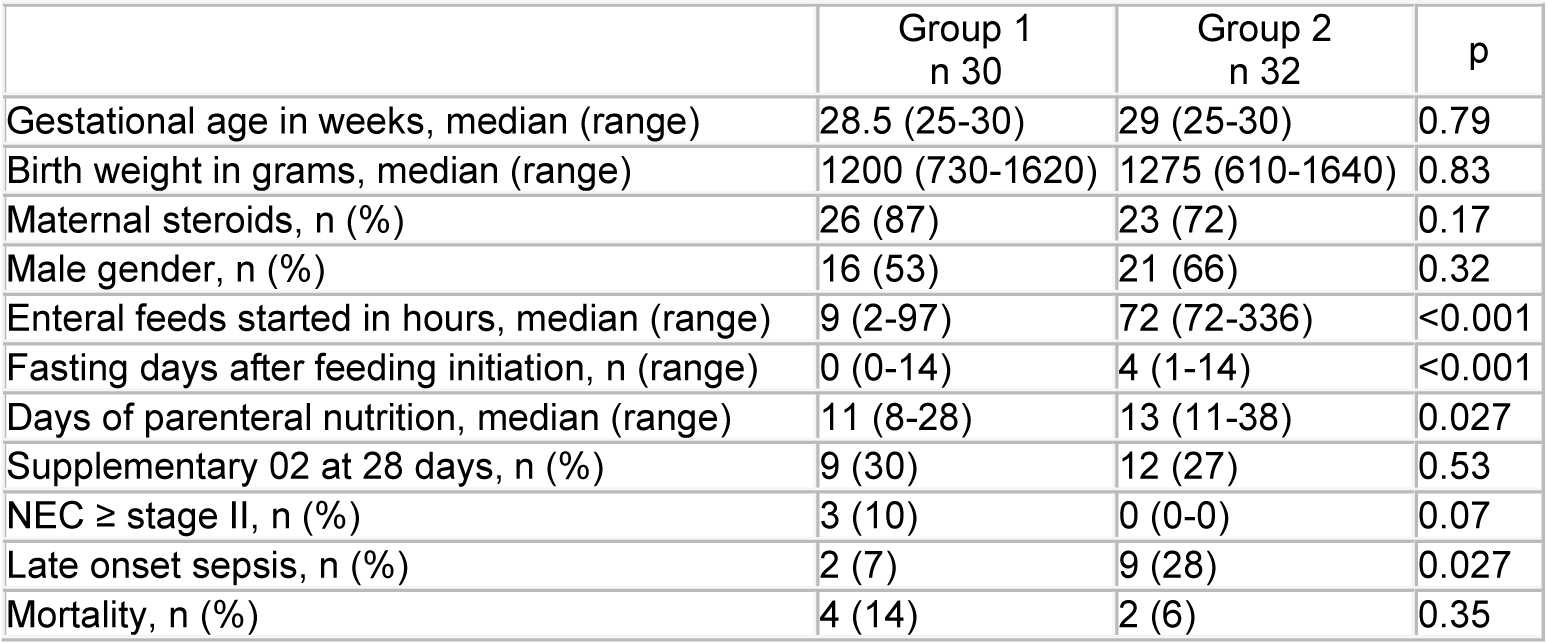Early Minimal Enteral Feeding wit h Human Milk in Very Low Birth Weight Infants (VLBW ): When To Start?
Alejandro Dinerstein, Ricardo M. Nieto, Claudio L. Solana, Daniela Ventura, Federico General. Neonatol ogy, Hospital Sardá, Buenos Aires, Argentina; Nutri cia Bago, Buenos Aires, Argentina; Fundacion Neonatolog ica Dr. Miguel Larguia, Buenos Aires, Argentina.
BACKGROUND:
The beneficial effects of trophic enteral feeding with breast milk have been published, but no conclusive data indicates which is the best moment to i nitiate it.
OBJECTIVE:
To compare neonatal morbidity and tolerabi lity in VLBW receiving early versus late MEF exclusively with human milk. Secondary objectives were: days to achieve full enteral feeding (120 Kcal) and growth at 28 days of age.
DESIGN/METHODS:
Randomized clinical trial. Populatio n: newborn infants with gestational age less than 31 w eeks and appropriate for dates. Exclusion criteria were: asphyxia and reverse flow in antenatal Doppler study. MEF was started within the first day of life in the e arly group (G1) and between 72 and 96 hours in the l ate group (G2) at 10 -15 ml/kg/d with his/her own mother's colostrum or pas teurized human milk (pHM) from bank, this volume was m aintained for three days and increased by 20 ml/kg/d afterwards. TPN was started immediately after birth i n both groups. All patients were fed exclusively with f resh or pHM for a minimum of 28 days and/or completing 32 weeks post menstrual age.
RESULTS:
From June 2011 to October 2012 sixty two infa nts were included in the study, 30 in G1 and 32 in G2. Demographic characteristics of the patients and c linical outcome are shown in the following table.
There was no difference in body weight, length and he ad circumference at 28 days. Feeding tolerance (amount or quality of residuals episodes and number of intakes suspensions) was similar in both groups.
CONCLUSIONS:
MEF with exclusive HM within the first 2 4 hs and continued for a minimum of 28 days is a safe pr actice, associated with a lower incidence of late onset sepsis.
E-PAS2013:1541.579


